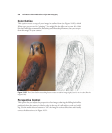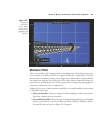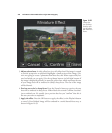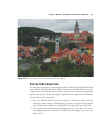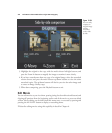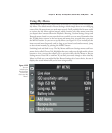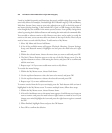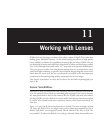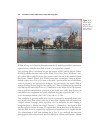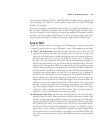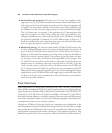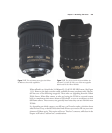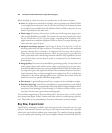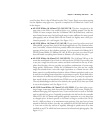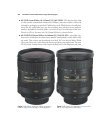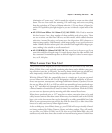
D7000. It’s easy to see from the illustration that the 1X rendition provides a wider, more
expansive view, while the inner field of view is, in comparison, cropped.
The cropping effect is produced because the sensors of DX cameras like the Nikon
D7000 are smaller than the sensors of the D700, D3, or D3x. These “full-frame” cam-
eras (which Nikon calls FX format) have a sensor that’s the size of the standard 35mm
film frame, 24mm × 36mm. Your D300’s sensor does not measure 24mm × 36mm;
instead, it specs out at 23.6 × 15.6 mm, or about 66.7 percent of the area of a full-frame
sensor, as shown by the red boxes in the figure. You can calculate the relative field of
view by dividing the focal length of the lens by .667. Thus, a 100mm lens mounted on
a D7000 has the same field of view as a 150mm lens on the Nikon D700. We humans
tend to perform multiplication operations in our heads more easily than division, so
such field of view comparisons are usually calculated using the reciprocal of .667—1.5—
so we can multiply instead. (100 / .667=150; 100 × 1.5=150)
This translation is generally useful only if you’re accustomed to using full-frame cam-
eras (usually of the film variety) and want to know how a familiar lens will perform on
a digital camera. I strongly prefer crop factor over lens multiplier, because nothing is
being multiplied; a 100mm lens doesn’t “become” a 150mm lens—the depth-of-field
and lens aperture remain the same. (I’ll explain more about these later in this chapter.)
Only the field of view is cropped. But crop factor isn’t much better, as it implies that the
24 × 36mm frame is “full” and anything else is “less.” I get e-mails all the time from
photographers who point out that they own full-frame cameras with 36mm × 48mm
David Busch’s Nikon D7000 Guide to Digital SLR Photography346
Figure 11.1
Nikon offers
digital SLRs
with full-frame
(1X) crops, as
well as 1.5X.



